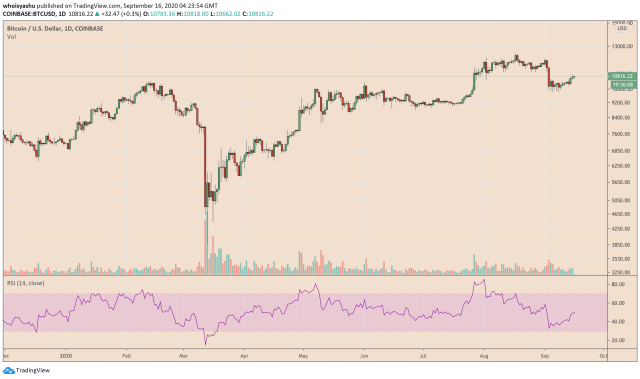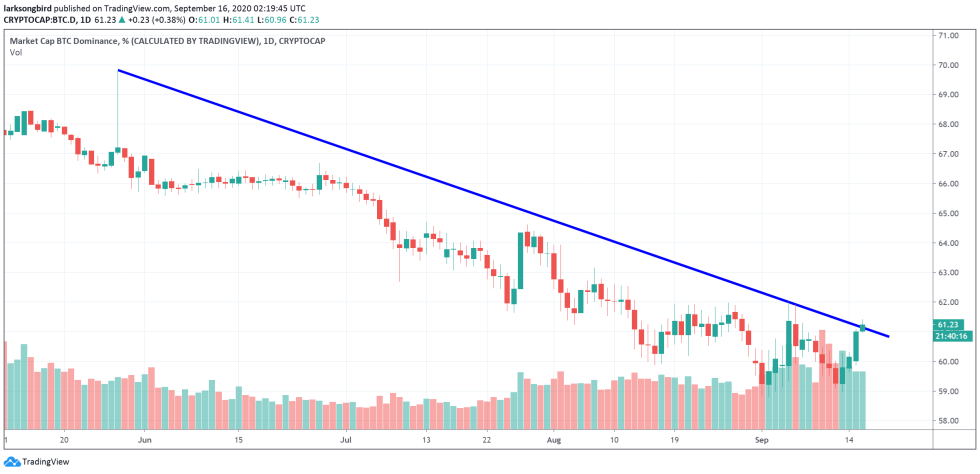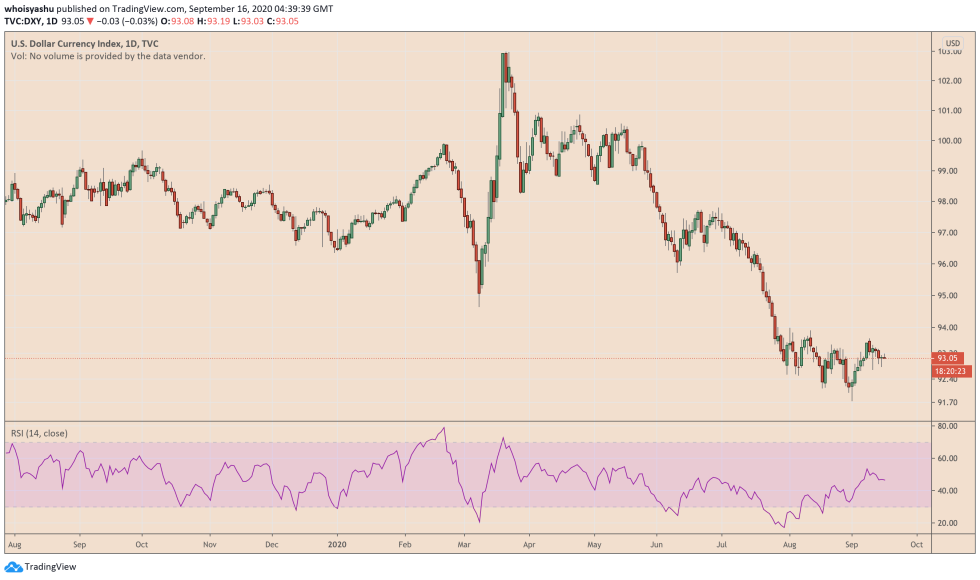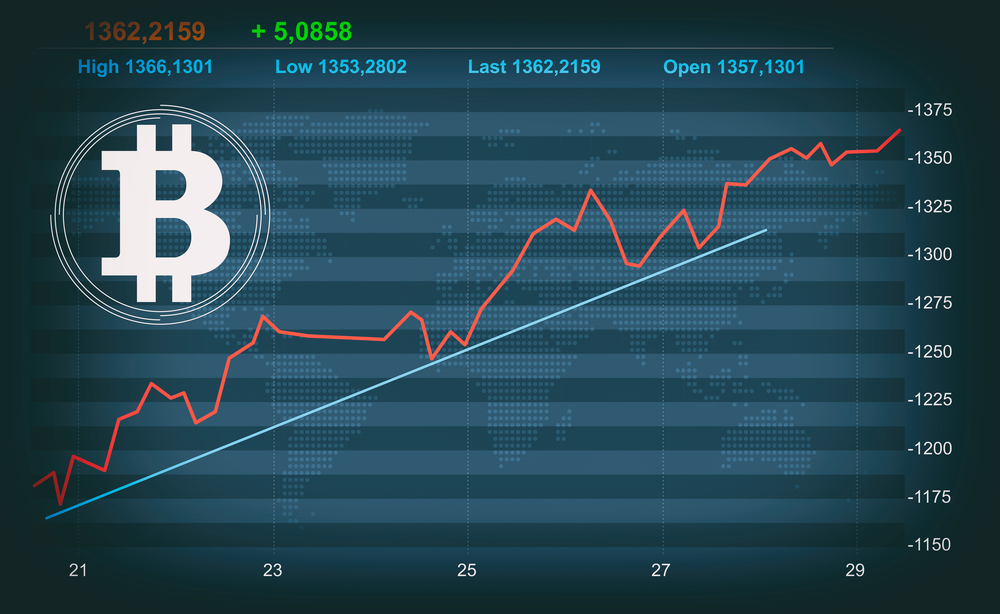
Bitcoin held steady on Wednesday even as a majority of top alternative cryptocurrencies, or altcoins, plunged considerably.

BTC/USD was up 0.3 percent to $10,816 per piece by 0423 GMT on a 24-hour adjusted timeframe. In comparison, Ethereum, the second-in-rank to Bitcoin, fell 4.09 percent. Other tokens, including XRP, Polkadot, Bitcoin Cash, BNB, and Chainlink, also dropped by 3-10 percent.
The polar-opposite sentiment appeared as Bitcoin Dominance–a barometer to measure the benchmark cryptocurrency’s market cap against the rest of the crypto market–crawled further back to higher levels. As observers noted, the BTC.D chart was looking for a breakout of its own, despite not being a tradable instrument.

The latest green candles in the chart above displayed a capital influx into the Bitcoin market from the neighboring altcoins. That is despite the cryptocurrency’s massive downside correction from its $12,486 yearly top established earlier in mid-August. Two catalysts explain how Bitcoin managed to hold steady above $10,700 even as rival tokens fell.
#1 FOMC September Meeting
As Bitcoinist reported earlier, Bitcoin was anticipating bullish moves ahead of the closure of the Federal Open Market Committee’s two-day monetary policy meeting on Wednesday. Traders awaited more details of the Federal Reserve’s plans to balance interest rates against its 2 percent inflation target.
The US central bank’s decision will come at 1800 GMT, followed by a news conference by its chair Jerome Powell.
Observers expect the Fed to keep its benchmark rates lower for a more extended period to keep aiding the US economy through the COVID-19 pandemic. Lower interest rates keep downside pressure on the US dollar and bond yields. They, thus, increase the appeal of comparatively riskier assets, such as gold, stocks, and even Bitcoin.
The US Dollar Index plunged 0.03 percent ahead of the FOMC meeting Wednesday.

At the same time, if the Fed remains elusive about its long-term plans, then the uncertainty alone could cause a minor correction in the Bitcoin market. Nomura’s Lewis Alexander explained that a recent uptick in manufacturing and jobs data might keep the central bank from sharing overly dovish tones.
“Recent comments from FOMC participants suggest a consensus for stronger, outcome-based forward guidance or significant changes to asset purchases remains some ways off,” he said in a note published earlier this week.
#2 MicroStrategy Buys More Bitcoin
The short-term risks have not deviated big investors from injecting fresh capital into the Bitcoin market.
MicroStrategy, a public-traded US firm, announced on Tuesday that it has bought another $175 million worth of BTC units for its reserves. That marked the company’s second-biggest investment in the crypto space. It had reallocated $250 million into Bitcoin last month.
On September 14, 2020, MicroStrategy completed its acquisition of 16,796 additional bitcoins at an aggregate purchase price of $175 million. To date, we have purchased a total of 38,250 bitcoins at an aggregate purchase price of $425 million, inclusive of fees and expenses.
— Michael Saylor⚡️ (@saylor) September 15, 2020
Michael Saylor, the co-founder of MicroStrategy, had earlier stated that they decided to invest in Bitcoin to protect their reserves against the dollar devaluation. That said, the cryptocurrency’s hedging narrative against the FOMC meeting helped it sustain the $10.7K-support.


















